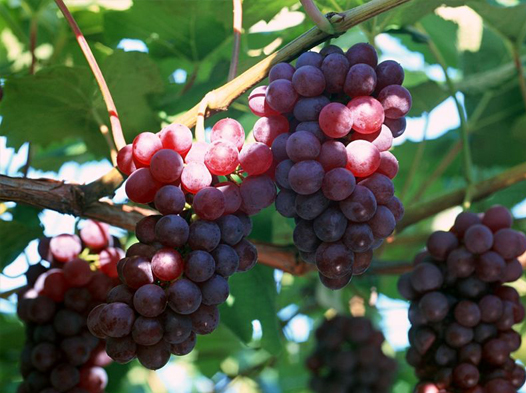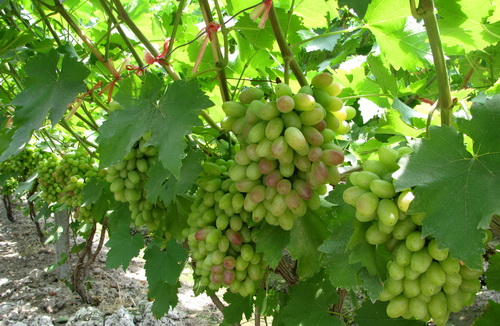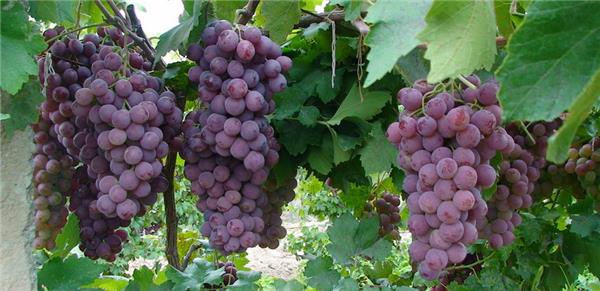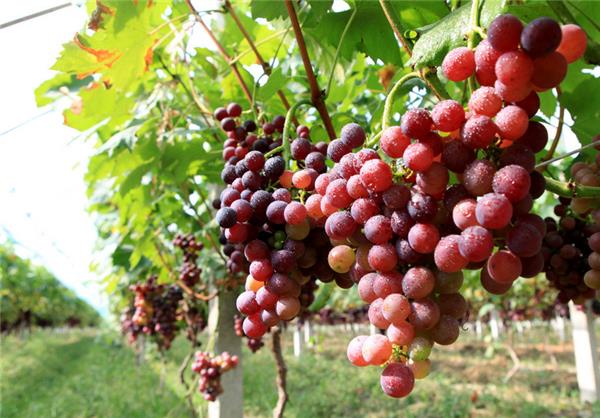[grape planting technology] how to grow grapes
Grapes have high nutritional value and commercial value. How to raise grape seedlings? What is the grape planting technique? Summer is the season of grape seedling planting, and summer planting is the main method of planting grape. The planting of grape in summer can come out of the nursery in autumn, which is an effective way to shorten the seedling cycle. Years of practice has proved that this method has the advantages of short occupation of seedling land, high survival rate, reduction of winter storage process and investment, good seedling quality, prosperous growth, good economic benefit and so on. The specific technologies are as follows:

Grape planting technology
How to raise grape seedlings? Pay attention to the planting time of grape seedlings
It can be carried out from June to August, preferably in summer. When the new shoots grow to 5-10 nodes and have a certain hardness and maturity of semi-Lignification, they can be cut along with cutting.
How to raise grape seedlings? Get ready to insert the bed.
The nursery bed should choose plots with good light, convenient drainage and irrigation and loose and fertile soil. The seedling land is ploughed and leveled and built into a 1-1.2-meter wide slotting machine (usually 3-4 rows, 6-8 meters apart) for use. At the same time, brackets and branches are prepared for shading. In order to improve the survival rate of summer cuttings, the cuttings can be soaked in 0.005%-0.007% indole acetic acid solution for 6-8 hours, or dipped in 0.1%-0.3% indole acetic acid solution for 5 seconds, or treated with rooting powder.

There are usually two ways to cultivate grape seedlings:
One is asexual culture, that is, nutritional culture; the other is sexual culture, that is, seed culture.
Vegetative culture is a method of using part of the organs of grape plants, mainly using stems to culture and cultivate seedlings. Its advantage is that the new plant has little variation, can maintain the variety characteristics of the mother plant, and can be cultured many times in a year. The plants cultivated by this method have the advantages of early formation, fast growth and early fruiting period, so they are widely used in production. The methods of asexual culture include hard branch cutting, green branch cutting, striping, grafting and tissue of stem tip and stem segment.
1. Timely sprouting and reasonable pruning
After sprouting in spring, wipe off the double buds and small buds as soon as possible, and retain the strong buds. It is necessary to pick the heart of the main shoot 2 or 3 times before flowering, erase the secondary shoot, transport more nutrients to the floral organ, and properly remove part of the inflorescence, and pinch off the 1pm, 4pm, and 5 at the end of the inflorescence 3-5 days before flowering, so that nutrients can be concentrated to supply the remaining fruit. In winter, medium-long shoots should be pruned, leaving about 10-15 new shoots per square meter, which should be staggered up and down to ensure that the growth of grapes per panicle can reach 15-25 leaves, and the yield per mu should be controlled within 2500 kg. This can make the ears tight, the grains neat, mature and consistent, and improve the flavor and color of the berries.

In order to pursue high yield, many fruit growers do not thinning inflorescences or pinching ear tips in summer, so that the nutrient supply is scattered and the fruit size is different. When cutting in winter, there are more branches and vines, which causes the fruit part to move up quickly, so that the ear is concentrated in the upper part of the shelf surface. Due to excessive load and uneven distribution, malnutrition, it is difficult to form high-quality fruit.
In order to improve the lighting conditions of the shelf surface, reduce diseases, and promote flower bud differentiation and vine enrichment, the luxuriant vines should be pruned with leaves after grape harvest. Remove the high and strong branches in the upper part of the shelf and the weak branches in the lower part, as well as the branches in the wrong position, reduce nutrition consumption, cultivate strong mother vines, and reduce the air humidity under the shelf to avoid diseases.
two。 Strengthen the management of fertilizer and water to prevent premature senescence of trees
The growth potential of Jufeng grape is strong, and the requirement of fertilizer and water condition is high. But irrigation should be moderate, especially stop watering 15-20 days before picking. It is necessary to control the amount of nitrogen fertilizer and increase the application of phosphorus and potassium fertilizer.
At the beginning of a large number of fruit-bearing vineyards, we should pay attention to the application of fertilizer, keep the trees strong and prolong the full fruit period.
Organic fertilizer: it can be fertilized in the proportion of 3 kg of high-quality barnyard manure for every 1 kg of fruit, and 1-2 kg of calcium superphosphate is mixed in every 100 kg of organic fertilizer. Apply after fruit picking (September). The method is to dig the trench between the rows, which is 30-40 cm deep and 40-60 cm wide, equal to the length of the row, once every two years. When applying fertilizer, you should mix the fertilizer with the soil evenly, then backfill and step on it, and then water it.

Among them, hardwood cuttings and grafting are widely used, and it is also a more traditional method. Tissue culture is a modern breeding method with large investment and high requirements for facilities and technology.
Sexual culture is a method of using seeds to produce new plants. it is the result of sexual hybridization and genetic recombination. The genetic variability of the new plants is large, so it is difficult to maintain the characteristics of the original varieties, and this method is not used to raise seedlings of good varieties. Seed culture is usually used in traditional grape breeding, hybrid seeds are obtained by hybridization, and new varieties with good characters are screened from a large number of seedlings. This method is often used for the breeding of new grape varieties, but it is labor-consuming and time-consuming, and the breeding cycle is long, so it is not suitable for general seedling culture.
It is the result of sexual hybridization and genetic recombination. The genetic variability of the new plants is large, so it is difficult to maintain the characteristics of the original varieties, and this method is not used to raise seedlings of good varieties. Seed culture is usually used in traditional grape breeding, hybrid seeds are obtained by hybridization, and new varieties with good characters are screened from a large number of seedlings. This method is often used for the breeding of new grape varieties, but it is labor-consuming and time-consuming, and the breeding cycle is long, so it is not suitable for general seedling culture.
Related
- Wuhan Hospital Iron Tree Blooming Result Was Instantly Frightened by the Gardener Master
- Which variety of camellia is the most fragrant and best? Which one do you like best?
- What is the small blue coat, the breeding methods and matters needing attention of the succulent plant
- Dormancy time and maintenance management of succulent plants during dormancy
- Minas succulent how to raise, Minas succulent plant pictures
- What are the varieties of winter succulent plants
- How to raise succulent plants in twelve rolls? let's take a look at some experience of breeding twelve rolls.
- Attention should be paid to water control for succulent plants during dormant period (winter and summer)
- Watering experience of twelve rolls of succulent plants
- Techniques for fertilizing succulent plants. An article will let you know how to fertilize succulent plants.



